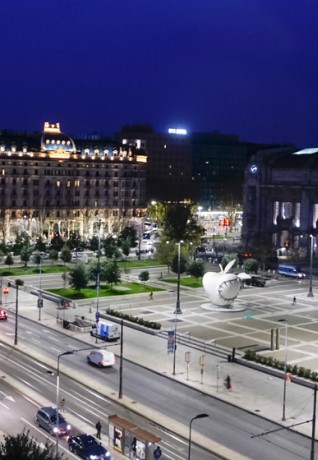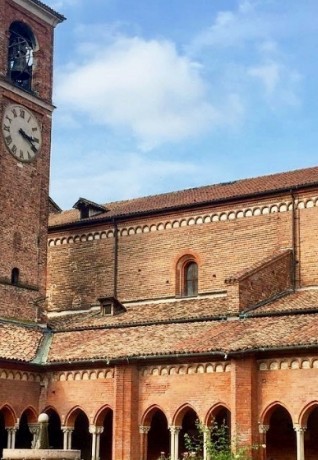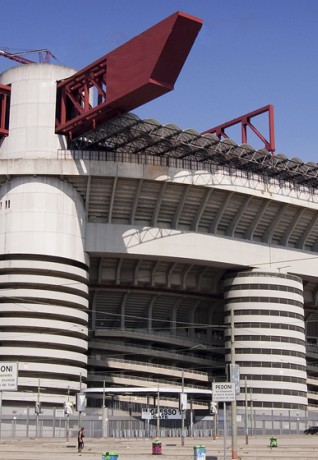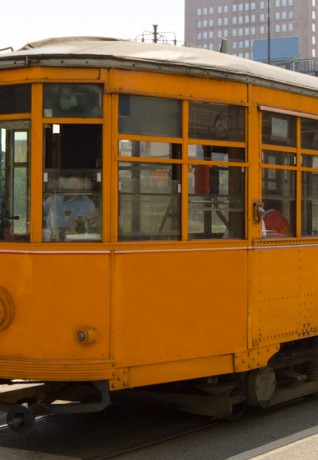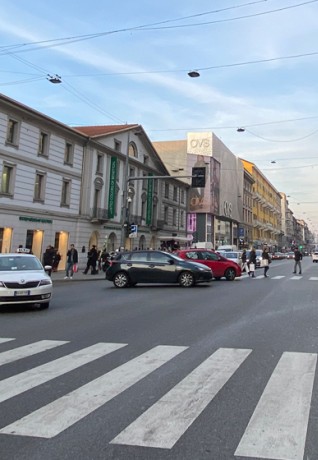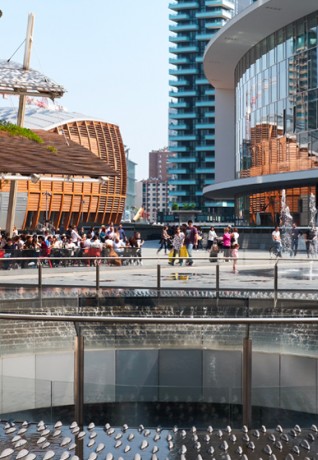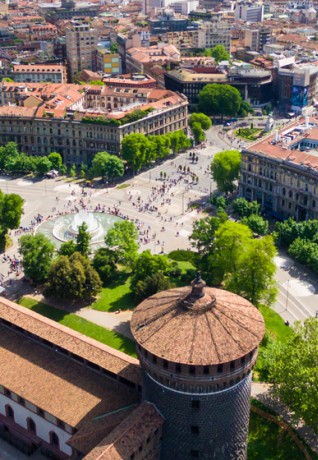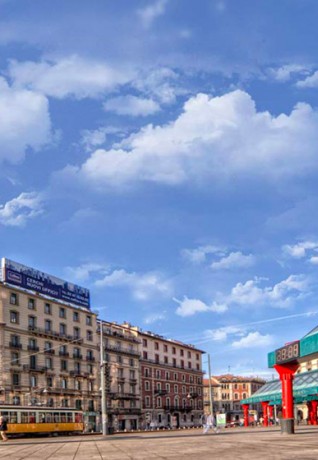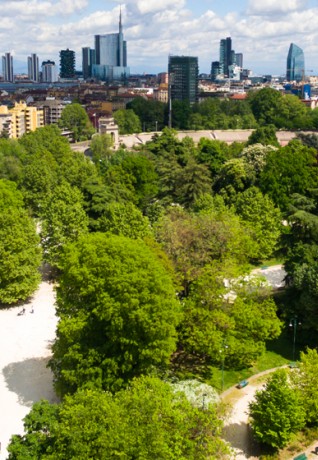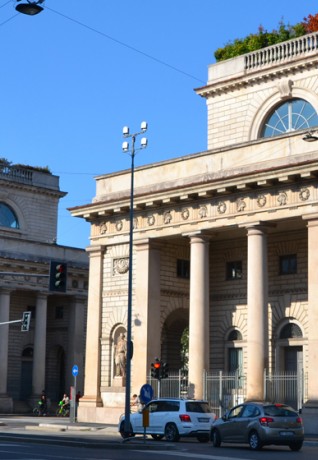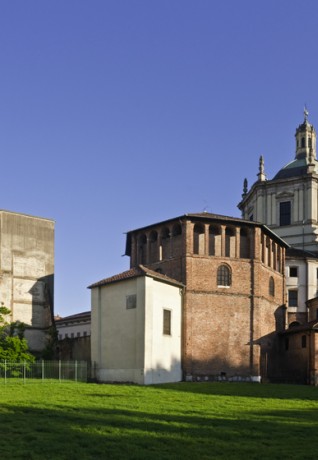Accessible itinerary: the art itinerary
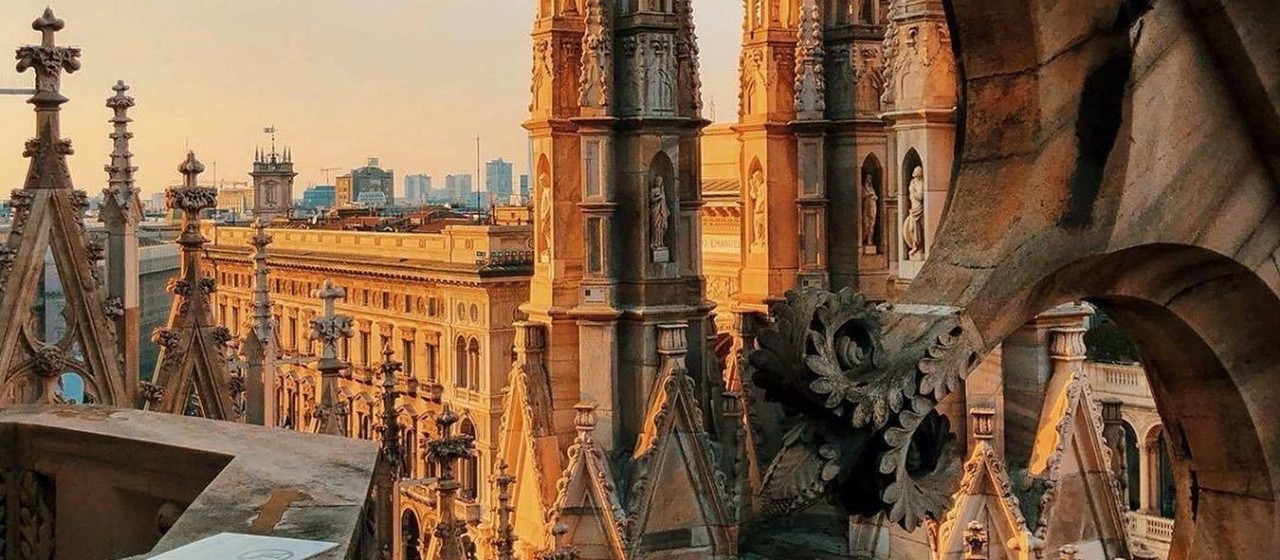
This itinerary connects important museums of the city hosting some of the most famous masterpieces of European art history: the Dead Christ by Andrea Mantegna, The Supper at Emmaus by Caravaggio (Pinacoteca di Brera), the Quarto Stato di Pellizza da Volpedo (Museo del Novecento). Works by Picasso, Matisse, Boccioni and Balla are exhibited at the Gallerie d'Italia and at the Galleria d’Arte Moderna (GAM).
How to get there
The itinerary begins with a visit to the Pinacoteca di Brera. The following public transports pass nearby: underground M3 line (Montenapoleone stop - accessible with lift) and M2 line (Lanza stop - not accessible); Tram 1, 2, 12,14; Bus 61, 57, 94.
For more information for passengers with disabilities, please visit the ATM web page.
The Pinacoteca di Brera is located in Palazzo di Brera, which also houses the Braidense Library, the Botanical Garden, the Astronomical Observatory and the Academy of Fine Arts.
Palazzo Brera, located in a pedestrian area, does not have private parking; people with disabilities can park in the side courtyard by sending an email to: pin-br@beniculturali.it (entrance from via Fiori Oscuri 2).
The palace was built on an ancient fourteenth-century convent of the order of the Umiliati, later passed to the Jesuits, who established a school there. In 1773, following the dissolution of the Jesuits, the Brera College became state property and the Empress Maria Theresa of Austria wanted to use it as the seat of one of the most advanced cultural centre in the city.
The Pinacoteca opened to the public in 1810. Today the museum collects masterpieces such as the Dead Christ by Andrea Mantegna, The Kiss by Francesco Hayez, the Virgin with Child, Angels and Saints by Piero della Francesca, the Supper in Emmaus by Caravaggio, Fiumana by Pellizza da Volpedo and many others.
Once you leave the Pinacoteca you can choose whether to relax at the tables of one of the many bars and restaurants in the neighbouring streets or head to the next destination.
Cross via Brera (crossing with threshold, paved paving) and get to the sidewalk on the other side of the street. Turn left. When you reach Piazzetta Brera, cross the road again at the hump (paved pavement) and return to the sidewalk which is on the same side of the Pinacoteca.
Continue along via Brera (paved sidewalk, slope of 3.2% to the right, driveways) till the intersection with via Monte di Pieta (3 cm step, paved stone with tram tracks, traffic lights without acoustic signal) and cross the street.
Continue along via Verdi, paying attention not to take the cycle path, pass under the portico of the building on your left (the old headquarters of the Cassa di Risparmio delle Province Lombarde - Cariplo) and continue until the intersection with via Manzoni.
On your right, you can admire the Teatro alla Scala.
Cross via Verdi (asphalt pavement) continue (paved pavement with tram tracks) until you reach the centre of piazza Scala. On the opposite side of the Teatro alla Scala, you will find Palazzo Marino, seat of the Municipality of Milano and on your left the Palazzo della Banca Commerciale Italiana, now seat of the Gallerie d'Italia. Finally, on your right, you'll see the Galleria Vittorio Emanuele II.
The Gallerie d'Italia host a rich collection of works of art created between the nineteenth and twentieth centuries by artists such as Antonio Canova and Umberto Boccioni, and in certain periods of the year you can visit collections and temporary exhibitions: https://www.gallerieditalia.com/.
Crossing piazza della Scala you reach the entrance to the museum: the main entrance has two series of 3 and 8 steps while the entrance in via Manzoni, at the corner of piazza della Scala, is accessible to people with disabilities.
After visiting the Gallerie d'Italia, cross piazza della Scala (pavement in cobblestones with paved paths) to reach the Galleria Vittorio Emanuele II.
The Galleria has been considered the city's drawing room for years. Drinking a coffee at the Zucca or dining at the Biffi or at the Savini were among the rites of the Milanese bourgeoisie.
Not to be missed, in the centre of the Gallery, a visit to the famous "Ottagono" on whose floor there is a mosaic with the coat of arms of the Savoy family and on the sides the coats of arms of the four cities that, in different periods, were the capitals of the Kingdom of Italy (Milano, Turin, Florence and Rome). In the lunettes around the vault, allegories of the four continents are depicted: Africa, Asia, Europe and America.
After crossing the Galleria, you reach Piazza Duomo. On your left, you can admire the famous Cathedral of the Duomo.
In front of you, on the other side of the square, you can see the Palazzo Reale and the Museo del Novecento. The latter was inaugurated in 2010 and is housed in the Palazzo dell'Arengario where you can admire works by Umberto Boccioni, Amedeo Modigliani, Giorgio De Chirico, Mario Sironi, Giorgio Morandi, Lucio Fontana and Pellizza da Volpedo, including the famous Quarto Stato.
The last section of the museum, dedicated to arte povera, is located in a wing of the Palazzo Reale which can be reached by a suspended walkway with an incredible panoramic view of the Duomo.
The last stop on this itinerary is the Galleria d’Arte Moderna. The fastest way to reach it is to use the underground (M1 line): the accessible lift for people with disabilities in Piazza Duomo is located under the northern arcades (on the left side of the Galleria Vittorio Emanuele) under the portico that leads to via Carlo Cattaneo (take the pharmacy as a reference).
Once you arrive at the Palestro stop, exit onto Corso Venezia (stop equipped with a stairlift) and continue for about 100 meters towards the Giardini Pubblici Indro Montanelli where you can enjoy a pleasant stop.
Reach the intersection with via Palestro and turn left (asphalt pavement). Continue for another two hundred meters, pass the intersection with via Marina (asphalt paving, absence of acoustic signals for the blind) and reach the entrance to the Galleria d’arte moderna (GAM).
The Gallery, located inside the splendid Villa Reale, is one of the masterpieces of Milanese Neoclassicism, built between 1790 and 1796. Today it houses some prestigious collections such as the Grassi collection and the Vismara collection.
In the surroundings of the Galleria d’Arte Moderna, you can find the following public transport: underground M1 line (Palestro stop, equipped with a stairlift); bus: 94 and 61.
For more information for passengers with disabilities, please visit the ATM web page.

 Log in
Log in


